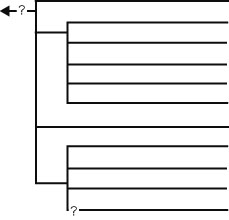| NIES-MCC | KU-MACC | Tree to Strain | Japanese | English |
| Life / Eukarya / Plantae / Viridiplantae / Chlorophyta / Ulvophyceae | |

|
Oltmannsiellopsidales(Oltmannsiellopsis etc.) Ulotrichales (Monostroma, Ulothrix etc.) Chlorocystidales(Desmochloris, "Halochlorococcum" etc.) Acrosiphoniales(Acrosiphonia, Urospora etc.) Ulvales(Enteromorpha, Ulva etc.) Pseudoneochloris Ignatius / Pseudocharacium Trentepohliales(Trentepohlia etc.) Cladophorales (sensu lato) (incl. Siphonocladales) (Cladophora, Chaetomorpha, Valonia etc.) Dasycladales (Acetabularia etc.) Caulerpales (sensu lato) (incl. Bryopsidales, Codiales)(Caulerpa, Codium, Bryopsis etc.) |
| Reference |
|
|
The Ulvophyceae includes many macroscopic seaweeds (e.g. Ulva, Cladophora, Codium), but many unicellular or microscopic filamentous species are also known. Many species live in marine, but there are many freshwater and terrestrial species. Some species, such as Monostroma, Enteromorpha (synonymous to Ulva), Caulerpa, are sometimes used as food. Almost all ulvophycean algae have cell wall in the vegetative stage. They are unicellular, sarcinoid, filamentous and foliose. Only Oltmannsiellopsis (Oltmannsiellopsidales) is unicellular or colonial flagellate. Multicellular species show no elaborate tissue differenciation. Plasmodesmata is absent except for the Trentepohliales. Cell wall is usually composed of cellulose, but the cell walls of mannan or xylan are known (e.g. Caulerpales). The ulvophycean algae are uninucleate, siphonoclaous (made up by multinucleate cells) or siphonous (cross wall-less multinucleate thallus). Cytokinesis is archieved by a simple furrowing, but phycoplast-like structure is reported in a species. Flagellate cells are naked or covered by small scales, and usually possess two or four homodynamic equal flagella. The opposite basal bodies are displaced in a counterclockwise direction. Asexual reproduction is carried by binary fission, zoosporogenesis, sporogenesis, fragmentation etc. The ulvophycean algae usually show the alternation of gametophyte and sporophyte. |
 1: Oltmannsiellopsis (Oltmannsiellopsidales, NIES-672). 2: Ulothrix (Ulotrichales, NIES-642). 3: Ulva (Ulvales, Hok-85). 4: Codium (Caulerpales, KU-654). |